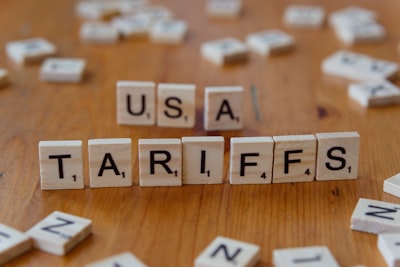South African exporters are facing a seismic shift in global trade dynamics: the United States is set to impose a blanket 30 percent tariff on a wide range of imports from South Africa, raising the cost burden for local producers and threatening export-driven industries.
Tough New Tariff Hits Without Warning
Earlier this week, the US administration confirmed that South African imports will face a sharp increase from the existing 10 percent tariff to 30 percent within seven daysThis move comes as part of a broader “reciprocal” tariff policy targeting around 70 countries that failed to secure bilateral trade agreements by the August 1 deadline
The Trump administration had previously announced an April tariff of 31 percent against South Africa, later softened to 10 percent temporarily but this comfort is ending as the full 30 percent rate now takes effect Meanwhile, other countries including Switzerland (39 percent) and Canada (35 percent) have also been given significantly higher rates
Severe Economic Threat to Jobs and Industry
The harsh new tariff is expected to deal a heavy blow to South Africa’s export-reliant sectors, particularly agriculture, automotive manufacturing, steel, and citrus all of which rely heavily on access to the US market for duty‑free trade under the AGOA framework
Officials warn that as many as 30,000 workers could be laid off immediately, and as many as 100,000 jobs across multiple sectors may disappear if alternatives are not found soon
Failed Diplomacy: No Trade Breakthroughs
South African negotiators previously made multiple overtures to avoid the escalation, offering to purchase US natural gas and invest billions in American industry in exchange for trade exceptions. However, none of the formal proposals submitted in May and June were accepted by the US administration
Trade Minister Parks Tau and other officials remain engaged in last-minute talks, but uncertainty persists as South Africa enters the effective start of the tariff just days away
Domestic Response: Seeking Relief and Market Diversification
In response, the South African government quickly activated an “Export Support Desk” to help affected firms navigate the crisis and seek foreign markets beyond the US. Officials are also examining competition rule exemptions to enable local exporters to collaborate and remain competitive
President Ramaphosa stressed the urgency of mitigating the economic shock and pledged to roll out support measures including help via the Unemployment Insurance Fund, working capital, and export development initiatives
Additionally, the government is accelerating efforts to diversify export destinations by strengthening intra-African trade ties and expanding access in Asian and Middle Eastern markets
Strategic Setback for AGOA and Trade Stability
AGOA had previously allowed duty‑free access for many South African goods—an advantage now effectively nullified by the new tariff regime . With US levies now sweeping across nearly all export categories, the economic logic behind AGOA’s trade benefits has been undermined.
Local industry leaders warn that once international buyers shift procurement to competitors with lower tariffs—such as Indonesia—they may be hard to win back even if trade terms are eventually renegotiated
Political Motivations and Geopolitical Fallout
Analysts suggest that the tariffs go beyond pure economic policy they also reflect political tensions over South Africa’s domestic affirmative action laws and its international positions, including its legal actions at the International Court of Justice
Critics accuse the US of using tariff power as a political tool, arguing that these measures weaken democratic trade norms and risk alienating long-standing partners like South Africa
The Immediate Outlook: A Critical Turning Point
As the 30 percent tariff on South African goods becomes official, export-driven industries face a reckoning. Local producers must urgently adapt to survive, whether by finding new markets or restructuring products and pricing.
The government’s mitigation plans including export support systems and deregulation efforts may soften the blow, but the long-term damage to South Africa’s export reputation could be lasting.
Conclusion: Resilience in the Face of Trade Shock
The sweeping 30 percent US tariff marks a watershed moment in South Africa’s trade history. If not managed carefully, this sudden shift could cost tens of thousands of jobs and shake the foundations of sectors built around access to the US market.
Yet this crisis also presents an opportunity for South Africa to accelerate export diversification, deepen regional trade partnerships, and strengthen local resilience. Strategic adaptation and bold diplomacy are now essential to turning a near‑catastrophe into a potential catalyst for long-term reform.
for more news visit our website africatrademonitor.com




